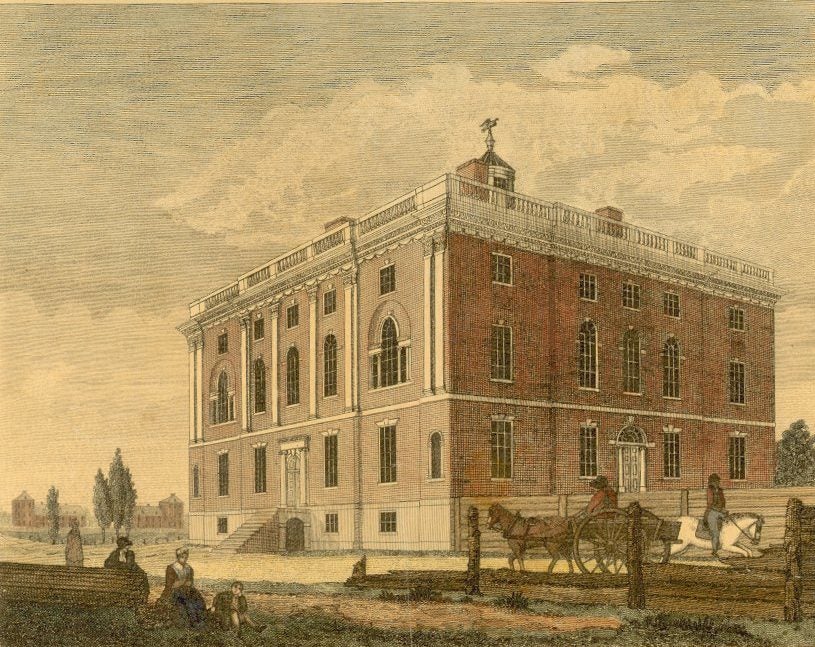James Curtis Booth was born in Philadelphia on July 28, 1810, the son of George and Ann (Bolton) Booth. His early education was in classical schools in Philadelphia and at Hartsville Seminary in Bucks County, Pennsylvania.
Booth matriculated at the College of the University of Pennsylvania in 1826 and graduated with an A.B. degree in 1829.
After completing college, Booth continued his study of chemistry and geology by spending a year under the tutelage of Amos Eaton at Rensselaer Polytechnic Institute. In 1831-1832 Booth delivered a series of lectures in Flushing, on Long Island. By 1833, having exhausted resources in the United States, he sailed for Europe where he spent three years studying analytical chemistry with Friedrich Wohler in Kassel and with Gustav Magnus in Berlin, attending lectures in Vienna, and touring chemical factories throughout Europe.
When Booth returned to Philadelphia in 1836, he quickly established the country’s first consulting firm in analytical chemistry. He also also participated in geological surveys of Pennsylvania in 1836 and of Delaware in 1837-1838, while he was serving as Delaware’s state geologist. This interest in geology was eventually set aside in favor of complete concentration on chemistry.
During the first ten or fifteen years after his return from Europe, Booth devoted much of his time to the education of young chemists, guided by his conviction that practical and theoretical chemistry are interdependent, and that experience in the laboratory is essential. He established his own chemistry courses providing students with laboratory experience as well as theoretical instruction, establishing this course of study as the standard for the education of American chemists. Over fifty students would be trained in his laboratory, including two future University of Pennsylvania chemistry professors: John Fries Frazer (teaching 1844-1873) and Robert E. Rogers (teaching 1852-1877). Booth was also called on by a number of institutions to teach chemistry. He served as professor of chemistry applied to the arts at the Franklin Institute from 1836 to 1845 and taught chemistry at Philadelphia’s Central High School from 1845 to 1848.
In 1850 the Trustees of the University of Pennsylvania established the University’s fourth school, the Department of Chemistry as Applied Arts. Booth was engaged as the first professor of this subject. Unfortunately, his work at the United States Mint consumed most of his time and energy, and Booth was not able to give the needed attention to Penn’s new endeavor. The University of Pennsylvania reshaped its interest in the relationship of science and manufacturing to establish, in 1852, the School of Mines, Arts and Manufacturers. Booth continued teaching at Penn until 1855, but only on a limited basis.
From 1849 until shortly before his death, Booth served as melter and refiner at the United States Mint in Philadelphia. This work was exceedingly demanding, but Booth was up to the task. The gold arriving from the new fields in California had high levels of impurities, more than current refining techniques could deal with. Over the years, Booth had to invent and then adjust new methods of refining gold. The job was made even more challenging when the federal government chose to begin producing coins of silver, copper, and copper-nickel alloys. By the time of his retirement in 1887, Booth had brought about a revolution in the production of metals for coins by adapting procedures discovered in the laboratory for use in manufacturing processes.
Booth published a number of articles and pamphlets as well as the substantial Encyclopedia of Chemistry, Practical and Theoretical (1850). He was elected to the American Philosophical Society in 1839 and served as president of the American Chemical Society from 1883 to 1885.
Booth married Margaret M. Cardoza in 1853; they became the parents of three children. He died at his home in Haverford, Pennsylvania, in 1888.

